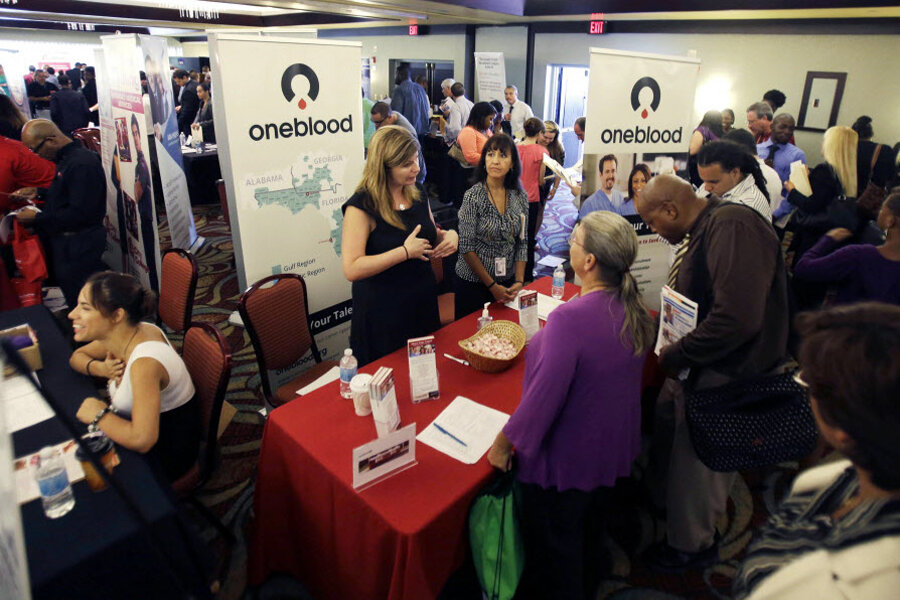US adds a lackluster 169,000 jobs, with men lagging behind women in employment
Loading...
America’s employers added 169,000 jobs in August, but the overall US labor market showed more signs of weakness than strength.
And, notably, the employment landscape is particularly challenging for men and less-educated workers.
A few key indicators:
• The US unemployment rate fell a notch to 7.3 percent, but the change stemmed more from a decline in the number of people hoping to work than from new jobs being created.
• The pace of job growth overall has slowed in recent months. In its report, the Labor Department revised down its estimates of job creation in June and July.
• A gap between men and women, which had narrowed since the nation officially exited recession in 2009, has emerged again. The unemployment rate is now nearly a full percentage point higher for men (at 7.7 percent) than for women (6.8 percent).
• Another gap, along education lines, is widening: The jobless rate for people with less than a high school diploma rose to 11.3 percent in August, while unemployment for those with a college degree is 3.5 percent and falling.
“This report confirms our outlook of lackluster economic growth for the second half of the year,” says Doug Handler, chief US economist at IHS Global Insight, in a written analysis of Friday's Labor report.
The situation lately has been particularly tough for men in blue-collar fields such as construction and manufacturing, Mr. Handler says.
“The size of the labor force shrank by 312,000 in August,” driven entirely by men exiting the job market, he says. “This suggests that much of the decline came from occupations that are male-dominated, such as construction, and that many former workers are becoming discouraged about their job prospects and dropping out of the labor force as a result.”
In part, this reflects decades-old challenges such as the increasing automation and off-shoring of factory jobs. Then, unemployment for men spiked sharply upward during the recession. That has been followed by some recovery (as recently as March, the jobless rates for men and women were equal at 7.6 percent) and now by the divergence.
Still, the job-market picture isn’t all bleak.
The number of jobs has been expanding steadily, albeit slowly. The share of the working-age population that is employed is slightly higher now (at 58.6 percent) than it was a year ago (at 58.4 percent).
The number of Americans who are working part time because they can’t find full-time work is a bit lower now (7.9 million) than a year ago (8 million).
And the number of people counted as “long-term unemployed” (being out of work and looking for a job longer than 27 weeks) has fallen to 4.3 million, from 5 million last August.
Some economists say the latest figures will give Federal Reserve officials pause as they consider whether to scale back the monetary stimulus policy known as quantitative easing (QE).
Fed Chairman Ben Bernanke has said that this policy, in which the Fed has been buying about $85 billion in treasury and mortgage-related bonds each month, could start phasing out soon if the economy follows an expected course of improvement.
Fed policymakers meet in the middle of September, with the question of a QE “taper” at the top of their agenda.






